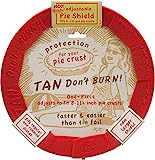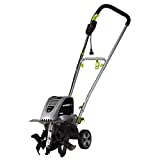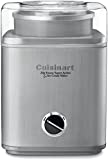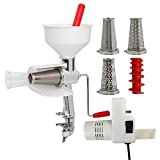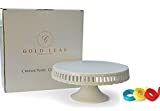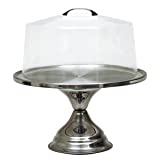Growing Peaches
Looking for Information About
How to Grow Peaches?
Is growing peaches easy?
Have you ever grown peach trees?
Here is simple information for the home gardener, about growing peaches in your backyard.
*FTC Disclosure: As an Amazon Associate I earn from qualifying purchases with no extra cost to you
*FTC Disclosure: As an Amazon Associate I earn from qualifying purchases with no extra cost to you
The Peach Tree (Prunus Persica) is a small deciduous tree with long, tapering light green leaves.
In the spring the peach tree bears single beautiful pink coloured flowers/blossoms.
I absolutely love the beautiful scene of peach trees in blossom!
Peaches are grown throughout the warm temperate regions of the world, particularly in zones 6 – 8.
Peach trees can be grown out in the open or pruned into a fan type of tree grown at the side of a building or a fence.
Although it is possible to grow a peach tree from seed, the preferred method is to purchase cultivars from a tree nursery or a garden center.
See also: Peach Pits/Seeds
Cultivation
Peach trees are self-compatible and single trees can be planted.
Yield
The yield from a peach tree varies greatly depending upon the size of the tree and the environment in which it is planted, and is growing.
A good, average yield from a fan is about 30 pounds, and from a bush about 30 -100 pounds.
Soil and Location
Peach trees are quite hardy, preferring a cold winter and a sunny dry spring. If the winter is warm and wet the buds may open too early only to be damaged by subsequent frosts.
Before growing peaches ensure that the planting site is in full sun and sheltered from cold winds and frost pockets.
Since the peach flowers very early, it is best grown as a “fan” on a wall or fence with a southerly exposure where it can be protected against potential frost at flowering time and additionally benefit from the warmth of the structure.
When planted in the open, as it generally is, the peach can be placed on a northern slope or the north side of a building so that it will bloom late after the danger of a damaging frost has passed.
Soil Preparation
To prepare the soil for planting, fork in a balanced fertilizer into good soil, for example 10-10-10 at the rate of about 3 oz. per square yard, with bone-meal at 3 oz. per square yard over an area of about two square yards.
Tree Selection
For a tree that will grow out in the open, chose a well-feathered maiden tree.
For a fan tree obtain a fan that is already partly formed. Choose one with about 5 – 12 shoots (depending upon the age of the tree) that are evenly spaced to form the first ribs of the fan.
Planting
Good establishment, healthy growth and successful cropping of fruit trees, such as the peach tree, depends a lot on how well it is planted.
Before growing peaches prepare the ground in early fall, before planting in the following spring.
Plant the peach tree during March or April, during the dormant season.
If planting a container-grown tree, it can be planted generally at any time.
In the prepared soil, dig a hole wide and deep enough to take the roots fully spread out.
Plant the tree to the same depth as it was at the nursery.
If the tree is going to be planted in an open space, it will require a diameter of about 20 feet.
A fan tree must be planted 6 – 9 feet away from the wall or the fence to allow for growth, with the stem inclined slightly towards its support structure.
After planting, apply a 2 – 3 inch mulch of well-rotted manure, compost or peat moss to around 18 inches around the base of the tree.
When growing peaches of the fan-trained type, a system of wires is necessary to support the fan. The wires can be attached to the wall or the fences about every 6 inches, beginning about 12 inches above the ground. Tie the canes to the wires where needed with thin wire.
Pruning and Training
Peach trees, like other stone fruit trees, are pruned in the late winter or the early spring.
Fan-trained peach trees should also be pruned after harvesting (see below: Harvesting).
For expert information of How to Prune Peach Trees, visit the Ontario Ministry of Food and Agriculture's website,
GO to: Pruning of Peach Trees
Here, below, are helpful books with information about how to grow peaches and other fruit trees, available for online purchase at *Amazon.com.
Click on the images for more detailed product information and customer reviews.
Feeding and Watering
In early spring each year, apply a balanced fertilizer, for example, 10-10-10 at the rate of 3 oz. per square yard as a top dressing over the rooting area, and replenish the mulch around the base of the tree if necessary.
Keep the soil moist at all times until just before the fruit begins to ripen.
Ample water is essential to good fruit production. It is best to keep the tree accustomed to moist conditions at all times and not to suddenly apply a lot of water near ripening time because there is the risk of this causing the fruit to split.
Because the soil at the base of a wall or fence tends to dry out rapidly, fan-trained peaches must be watered with special care. Be sure to direct the water to the base of the fan tree so that the moisture gets to the root system.
When watering the peach tree, do not wet the leaves, but rather concentrate the water on the root system.
Frost Protection
It is essential that the peach blossom is protected against frost from pink bud stage until the danger of frost has passed.
The fan-trained peach tree can be draped with burlap and removed during the day if the temperature rises during the daytime.
Thinning
It is important to thin the peach fruit to obtain good-sized peaches. Thin the peaches over a period of time, starting when the fruit-lets are about the size of large peas and stop when they are the size of walnuts.
After the final thinning is complete, the peaches should be about 9 inches apart.
Propagation
Peaches are propagated by budding and grafting, a task which is normally carried out by the tree nursery and not by the home gardener.
TOP of Peach Tart Recipes
HOME to Homepage at Peach Depot.com
©2010-2022 Peach-Depot.com
All Rights Reserved Worldwide
No Reproduction Permitted Without the Expressed
Written Consent of the Site Owner
NO More
Burned Pie Crust!
⇓
Get the
Pie Crust Shield!

★ Please Visit ★
My "Sister" Sites:
Raspberry Recipes
Rhubarb Recipes
Apple Recipes
HOW to GRILL Fruit for Dessert or Appetizer
If I had known that making my own
REAL Ice Cream, Frozen Yogurt and Sorbet with fruit and more was SOOO Easy, I would have started 30 years ago! ...
... It's like using a blender !







